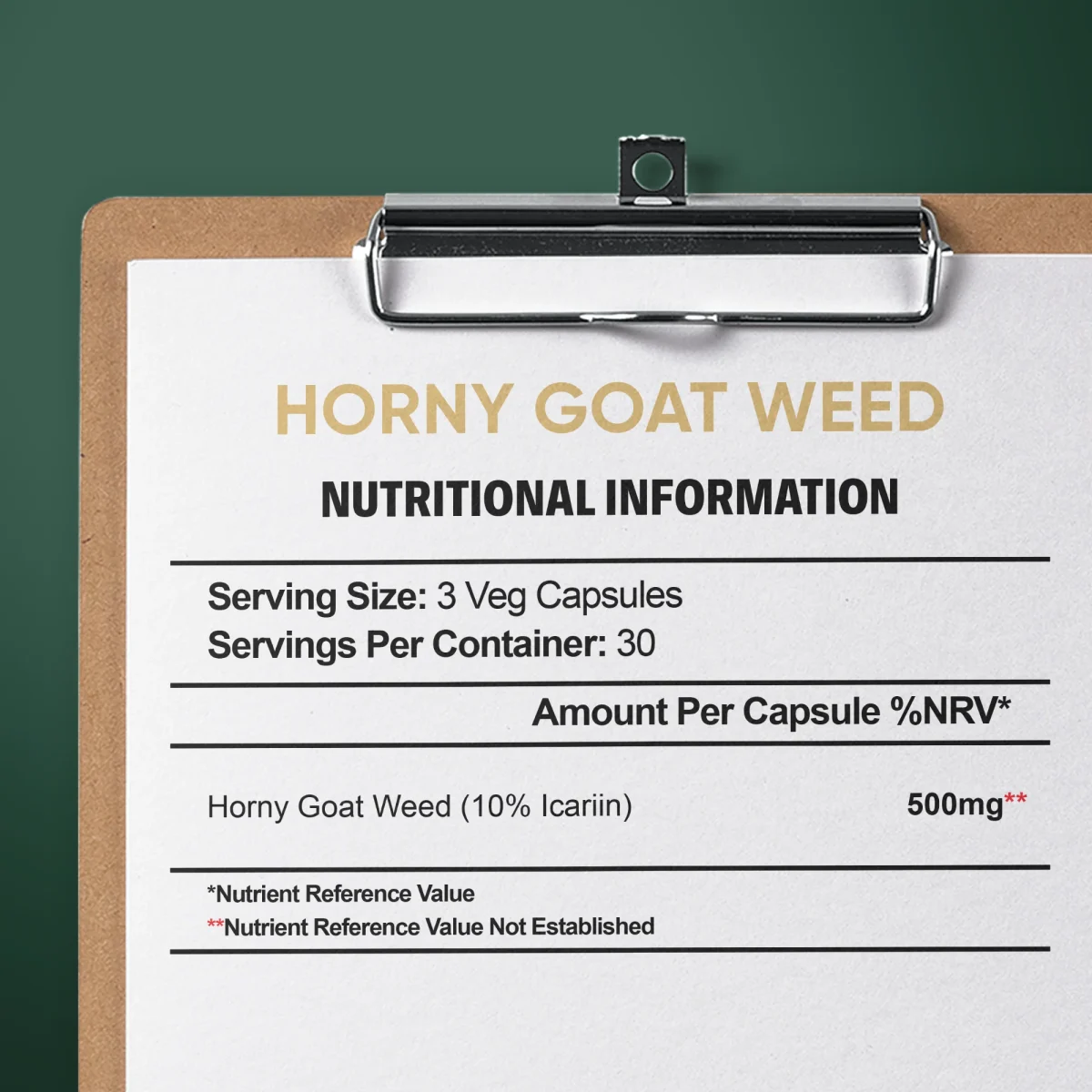If you’ve spent any time reading about natural sexual health supplements, chances are you’ve come across the name “Horny Goat Weed.” No, it’s not a joke—this plant, officially known as Epimedium, has been a staple in Traditional Chinese Medicine (TCM) for centuries. But is it really the libido-booster and performance enhancer it’s hyped up to be?
Let’s break it down: how it works, what it actually does, and whether it’s worth adding to your routine—not just for sexual health, but for your bones, brain, and beyond.
What Is Epimedium (Horny Goat Weed), Exactly?
Epimedium is a genus of flowering plants, most commonly found in China, known for their delicate leaves and small blossoms. But it’s the leaves—not the flowers—that are typically harvested and used in herbal medicine.
The key active compound in horny goat weed is icariin, a flavonoid thought to mimic some of the effects of testosterone, support nitric oxide levels, and even inhibit PDE5—the same enzyme targeted by ED medications like sildenafil (Viagra). In other words, it’s nature’s way of saying, “Let’s get things moving down there.”
Sexual Health: What the Science Says
The name alone tells you what horny goat weed is famous for—and the reputation isn’t baseless. In lab studies, icariin has demonstrated PDE5 inhibitory activity, meaning it could help increase blood flow to the penis, much like ED medications do. Some researchers have even gone so far as to call icariin a natural Viagra analog.
Animal studies have shown improved erectile function, libido, and even testosterone levels in males given Epimedium extract. While these effects are promising, keep in mind: human studies are limited, and the dosage of icariin used in trials is often far higher than what you’ll find in most over-the-counter supplements.
Still, many men report anecdotal success with horny goat weed for issues like:
Mild erectile dysfunction
Low libido
Sexual fatigue
Premature ejaculation
It’s even used in combination formulas with ingredients like ginseng and maca root, as discussed in our post on natural ED remedies, where we explore how herbs can complement pharmaceutical treatment.
If you’re currently taking ED meds like Fildena or Cialis Super Active, adding horny goat weed may enhance results—but always talk to a healthcare provider first.
Bone Density and Hormonal Health
Interestingly, horny goat weed isn’t just about the bedroom. In Traditional Chinese Medicine, it’s often used to treat weak bones, particularly in postmenopausal women.
And there’s actual data behind this. Studies published in the Journal of Ethnopharmacology show that icariin can stimulate osteoblast activity—in plain English, it helps build bone.
One randomized, controlled trial found that postmenopausal women who took Epimedium extract for two years showed improvements in bone density without major side effects. Researchers believe icariin mimics estrogenic activity, which could explain its effect on bone metabolism.
This makes it one of the few herbs with dual action on sexual and skeletal health, which is rare in the supplement world.
Mood, Fatigue, and Cognitive Support
While its aphrodisiac status grabs headlines, some researchers are exploring Epimedium’s role in reducing mental fatigue and boosting cognitive performance. Its antioxidant profile—especially flavonoids like icariin—might help reduce inflammation in the brain and support better mitochondrial health.
People who use it regularly often describe feeling more “clear-headed,” more energetic, and less mentally drained. It’s also believed to have mild adaptogenic properties, which means it could help the body better cope with stress.
These effects may be subtle, but for men dealing with low energy, poor motivation, or emotional burnout, horny goat weed might offer an edge. It aligns with our coverage on stress-related fatigue, which often plays a hidden role in performance issues.
Best Ways to Take It
Horny goat weed supplements typically come in capsule, powder, or tea form. But not all products are created equal—and quality matters.
Look for standardized extracts that contain 10% or more icariin, and avoid blends that don’t list dosage. The effective dose can range anywhere from 250 mg to 1000 mg per day, depending on the product and your goals.
Some users combine it with:
Tongkat Ali – for testosterone support
Panax Ginseng – for stamina and vitality
L-arginine – for nitric oxide support and vascular benefits
For a deeper breakdown, check out our guide on Panax ginseng’s sexual effects and how it compares with horny goat weed.
Potential Side Effects
Horny goat weed is generally well tolerated in moderate doses. But high doses—or using it for long periods—can cause issues like:
Dizziness
Rapid heartbeat
Dry mouth
Mood changes
Nosebleeds
It may also interact with blood pressure medications or blood thinners, so be sure to check with your doctor if you’re taking other prescriptions.
Why Epimedium Deserves a Place in Your Wellness Stack
From ancient roots in Chinese herbalism to modern supplement aisles, Epimedium remains one of the most intriguing natural remedies for male vitality. Whether you’re looking to spice things up in the bedroom, support testosterone levels, or keep your bones strong as you age, this plant packs more than just a provocative name.
And for men using pharmaceutical treatments like Viagra Professional or Kamagra Oral Jelly, horny goat weed could be a useful adjunct—not a replacement, but a complement that supports the whole picture.
As always, consistency matters more than hero doses. Start low, go slow, and give your body time to respond. Herbal solutions like Epimedium aren’t magic—but with the right plan, they might just make the magic happen.
